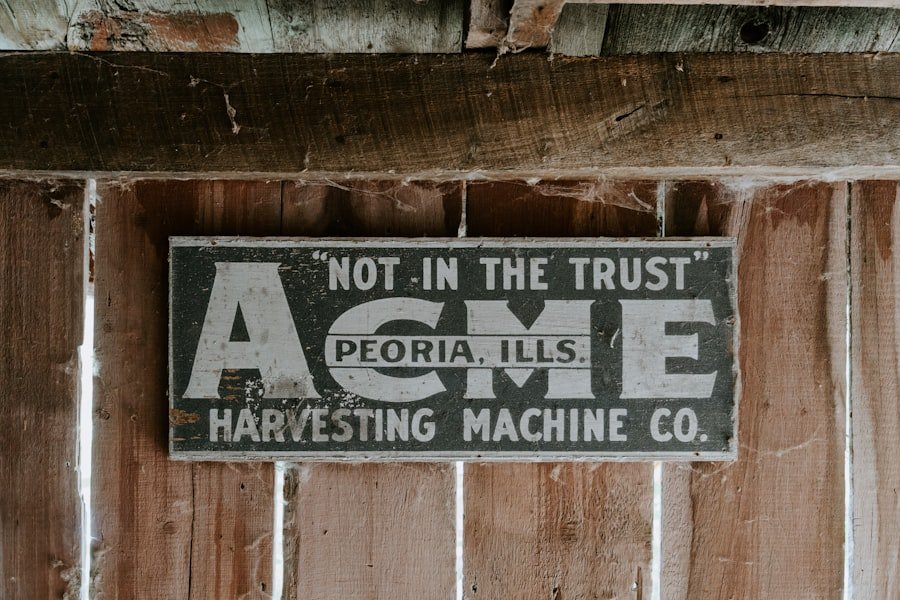Guerrilla marketing is a bold, unconventional approach to promoting products or services that relies on creativity and surprise rather than traditional advertising methods. It seeks to engage consumers in unexpected ways, often in public spaces, to create memorable experiences that resonate with audiences. This strategy is particularly effective for small businesses and startups with limited budgets, as it allows them to make a significant impact without the need for extensive financial resources.
By leveraging the element of surprise and tapping into the emotional responses of consumers, guerrilla marketing can generate buzz and foster brand loyalty. At its core, guerrilla marketing is about thinking outside the box. It challenges marketers to break free from the constraints of conventional advertising and explore innovative ways to connect with their target audience.
This approach often involves grassroots tactics, such as street art, flash mobs, or viral social media campaigns, that encourage consumer participation and word-of-mouth promotion. The ultimate goal is to create a lasting impression that not only captures attention but also drives engagement and conversions.
Key Takeaways
- Guerrilla marketing is an unconventional and low-cost marketing strategy that focuses on creativity and innovation to reach a target audience.
- The history of guerrilla marketing can be traced back to the 1980s when Jay Conrad Levinson coined the term and popularized the concept.
- The principles of guerrilla marketing include using imagination, energy, and time to achieve maximum impact with minimal resources.
- Marketers can benefit from guerrilla marketing by creating memorable experiences, generating buzz, and reaching a specific audience in a cost-effective way.
- Implementing guerrilla marketing strategies involves thinking outside the box, leveraging local resources, and creating a strong emotional connection with the audience.
The History of Guerrilla Marketing
The term “guerrilla marketing” was popularized by Jay Conrad Levinson in his 1984 book of the same name. Levinson’s work emerged during a time when traditional advertising methods were becoming increasingly saturated and less effective. He proposed that businesses could achieve remarkable results by employing unconventional tactics that focused on creativity and resourcefulness.
As the digital landscape evolved, so too did guerrilla marketing strategies. The rise of social media platforms and mobile technology provided new avenues for brands to engage with consumers in real-time.
Marketers began to experiment with digital guerrilla tactics, such as viral videos and interactive online experiences, which further expanded the reach and impact of their campaigns. Today, guerrilla marketing continues to evolve, blending traditional methods with cutting-edge technology to create immersive experiences that captivate audiences.
Understanding the Principles of Guerrilla Marketing

At the heart of guerrilla marketing are several key principles that guide its execution. First and foremost is the element of surprise. Successful guerrilla campaigns often catch consumers off guard, prompting them to take notice and engage with the brand.
This can be achieved through unexpected placements, eye-catching visuals, or interactive experiences that invite participation. Another essential principle is the focus on emotional connection. Guerrilla marketing seeks to evoke strong feelings in consumers, whether it’s humor, nostalgia, or inspiration.
By tapping into these emotions, brands can create a deeper bond with their audience, fostering loyalty and encouraging word-of-mouth promotion. Additionally, guerrilla marketing emphasizes authenticity; campaigns that resonate with consumers are often those that reflect genuine values and beliefs. Finally, guerrilla marketing thrives on community engagement.
By involving local audiences in their campaigns, brands can create a sense of ownership and pride among consumers. This not only amplifies the campaign’s reach but also fosters a positive brand image that resonates within the community.
The Benefits of Guerrilla Marketing for Marketers
One of the most significant advantages of guerrilla marketing is its cost-effectiveness. Traditional advertising methods can be prohibitively expensive, especially for small businesses or startups. Guerrilla marketing allows brands to achieve substantial results with minimal financial investment by leveraging creativity and resourcefulness instead of large budgets.
Moreover, guerrilla marketing campaigns often generate high levels of engagement and buzz. The element of surprise and emotional connection inherent in these strategies encourages consumers to share their experiences on social media, amplifying the campaign’s reach beyond its initial target audience.
Additionally, guerrilla marketing fosters innovation within organizations. By encouraging teams to think creatively and experiment with unconventional tactics, brands can cultivate a culture of innovation that drives long-term success. This mindset not only enhances marketing efforts but also contributes to overall business growth.
How to Implement Guerrilla Marketing Strategies
Implementing guerrilla marketing strategies requires careful planning and execution. The first step is to identify your target audience and understand their preferences, behaviors, and pain points. This knowledge will inform your campaign’s messaging and creative direction, ensuring it resonates with your intended audience.
Next, brainstorm creative ideas that align with your brand values and objectives. Consider how you can leverage public spaces or digital platforms to create memorable experiences that engage consumers. Collaborate with your team to develop a comprehensive plan that outlines your campaign’s goals, tactics, timeline, and budget.
Once your campaign is live, monitor its performance closely. Use social media analytics tools to track engagement metrics and gather feedback from consumers. This data will help you assess the effectiveness of your campaign and make necessary adjustments in real-time.
Examples of Successful Guerrilla Marketing Campaigns

One of the most iconic examples of guerrilla marketing is the “Dumb Ways to Die” campaign launched by Metro Trains Melbourne in 2013. The campaign featured a catchy song and animated characters that humorously depicted various ways to die due to unsafe behavior around trains. The campaign went viral, garnering millions of views on YouTube and significantly reducing accidents around trains in Melbourne.
Another notable example is Coca-Cola’s “Share a Coke” campaign, which involved replacing its iconic logo with popular names on bottles. This simple yet effective tactic encouraged consumers to seek out bottles with their names or the names of friends and family members, driving sales and fostering a sense of personal connection with the brand. These campaigns exemplify how guerrilla marketing can create memorable experiences that resonate with audiences while achieving tangible business results.
The Role of Creativity in Guerrilla Marketing
Creativity is the lifeblood of guerrilla marketing; it distinguishes successful campaigns from those that fall flat. In an age where consumers are bombarded with advertisements at every turn, standing out requires innovative thinking and a willingness to take risks. Creative campaigns not only capture attention but also spark conversations among consumers, leading to increased brand visibility.
Moreover, creativity allows brands to convey their messages in unique ways that resonate emotionally with their audience. Whether through humor, storytelling, or visual artistry, creative elements can evoke strong feelings that drive consumer engagement and loyalty. Brands that embrace creativity in their guerrilla marketing efforts are more likely to leave a lasting impression on their audience.
Measuring the Success of Guerrilla Marketing Efforts
Measuring the success of guerrilla marketing campaigns can be challenging due to their unconventional nature. However, several key performance indicators (KPIs) can help marketers assess their effectiveness. Metrics such as social media engagement rates, website traffic spikes, and sales conversions provide valuable insights into how well a campaign resonated with its audience.
Additionally, qualitative feedback from consumers can offer valuable context for understanding a campaign’s impact. Conducting surveys or monitoring online conversations can help brands gauge public sentiment and identify areas for improvement in future campaigns. Ultimately, measuring success requires a combination of quantitative data and qualitative insights to paint a comprehensive picture of a campaign’s performance.
Overcoming Challenges in Guerrilla Marketing
While guerrilla marketing offers numerous benefits, it also presents unique challenges that marketers must navigate. One common obstacle is the risk of negative backlash from consumers or local communities. Because guerrilla campaigns often take place in public spaces or involve provocative messaging, they can sometimes be misinterpreted or deemed inappropriate.
To mitigate this risk, it’s essential for brands to conduct thorough research before launching a campaign. Understanding local customs, cultural sensitivities, and community values can help ensure that your message resonates positively with your audience. Another challenge is measuring ROI effectively.
Given the unconventional nature of guerrilla marketing campaigns, tracking direct conversions can be difficult. Marketers must be prepared to adapt their measurement strategies and focus on broader indicators of success beyond immediate sales figures.
The Future of Guerrilla Marketing in the Digital Age
As technology continues to evolve, so too will guerrilla marketing strategies. The rise of augmented reality (AR) and virtual reality (VR) presents exciting opportunities for brands to create immersive experiences that captivate audiences in new ways. These technologies allow marketers to blend physical and digital interactions seamlessly, enhancing consumer engagement.
Moreover, social media will continue to play a pivotal role in guerrilla marketing efforts. Platforms like TikTok and Instagram provide fertile ground for creative campaigns that can go viral quickly. Brands that harness these platforms effectively will be well-positioned to reach wider audiences and drive meaningful engagement.
As we move forward into an increasingly digital landscape, guerrilla marketing will remain relevant by adapting to new technologies while staying true to its core principles of creativity and surprise.
Tips for Creating a Successful Guerrilla Marketing Campaign
To create a successful guerrilla marketing campaign, start by defining clear objectives that align with your overall business goals. Whether you aim to increase brand awareness or drive sales conversions, having specific targets will guide your creative process. Next, prioritize creativity over budget constraints.
Some of the most impactful guerrilla campaigns have been executed with minimal financial investment but maximum creative ingenuity. Encourage brainstorming sessions within your team to generate innovative ideas that challenge conventional thinking. Additionally, consider collaboration with local artists or influencers who can amplify your message within their communities.
Partnering with individuals who have established credibility can enhance your campaign’s authenticity and reach. Finally, be prepared to adapt your strategy based on real-time feedback and performance metrics. Flexibility is key in guerrilla marketing; being responsive to consumer reactions can help you refine your approach for maximum impact.
In summary, guerrilla marketing offers an innovative approach for brands seeking to engage consumers in memorable ways without breaking the bank. By understanding its principles, leveraging creativity, and measuring success effectively, marketers can harness this powerful strategy to drive brand awareness and loyalty in an increasingly competitive landscape. As we look ahead, the future of guerrilla marketing promises exciting possibilities driven by technological advancements and evolving consumer behaviors.
Brands willing to embrace creativity and adapt their strategies will undoubtedly thrive in this dynamic environment—making their mark in ways that resonate deeply with audiences everywhere.
For marketers looking to expand their toolkit beyond traditional strategies, “The Marketer’s Guide to Guerrilla Marketing” offers innovative insights into unconventional advertising methods. A related article that complements this guide is Drive Conversions with Content Marketing Solutions. This article delves into the power of content marketing as a strategic approach to engage audiences and boost conversions, providing a perfect synergy with guerrilla marketing tactics by emphasizing creativity and audience engagement. Together, these resources equip marketers with a comprehensive understanding of how to effectively capture and retain consumer attention in a crowded marketplace.
FAQs
What is guerrilla marketing?
Guerrilla marketing is a marketing strategy that focuses on unconventional, low-cost tactics to promote a product or service. It often involves creative and unexpected approaches to reach a target audience.
What are some examples of guerrilla marketing tactics?
Examples of guerrilla marketing tactics include flash mobs, viral videos, street art, public stunts, and unconventional partnerships. These tactics are designed to create a memorable and impactful experience for the target audience.
How can guerrilla marketing benefit businesses?
Guerrilla marketing can benefit businesses by generating buzz, increasing brand awareness, and creating a strong emotional connection with the target audience. It can also be a cost-effective way to reach a large audience and stand out from competitors.
What are the key principles of guerrilla marketing?
The key principles of guerrilla marketing include creativity, innovation, surprise, and a deep understanding of the target audience. It also involves taking calculated risks and thinking outside the box to achieve marketing objectives.
What are the potential risks of guerrilla marketing?
Potential risks of guerrilla marketing include negative public reaction, legal issues, and damage to brand reputation if the tactics are perceived as offensive or inappropriate. It’s important for businesses to carefully consider the potential impact of their guerrilla marketing tactics.



